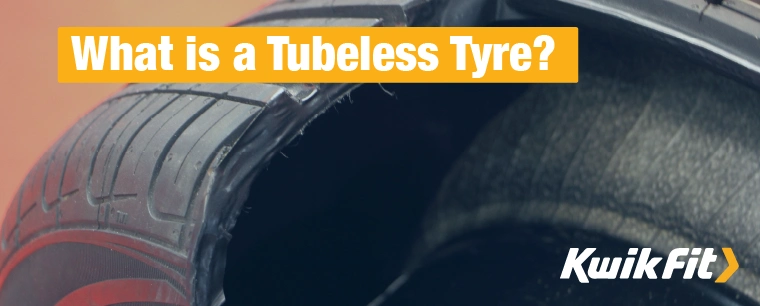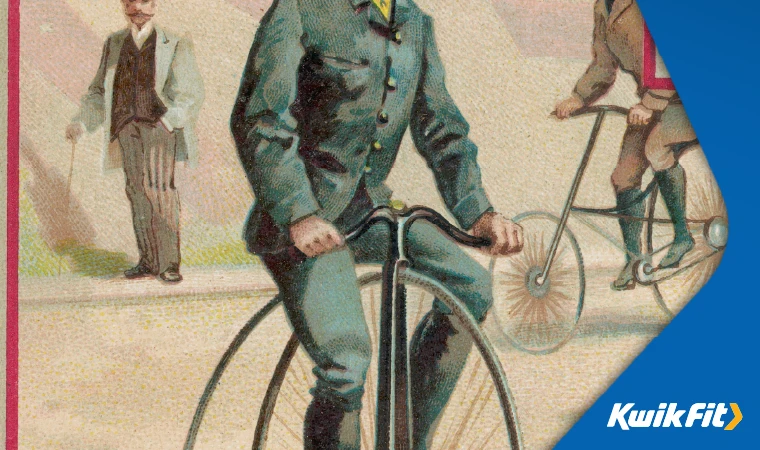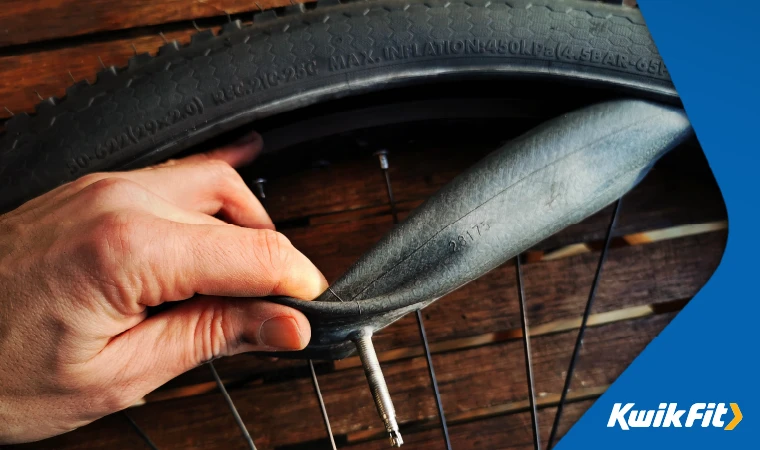What is a Tubeless Tyre?
Jack Dreyer | Friday 29th December 2023 10:00am

You may have recently heard of ‘tubeless tyres’ – most likely in relation to performance cycling – and you may be wondering exactly what a tubeless tyre is? For that matter, what in the world is a tubed tyre? Are they used on cars?
There are a whole host of questions here, so let’s clear everything up.
What is a tubed tyre?
To begin with, we need to address what a ‘tubed’ tyre is and, in order to do so, we need to look at a little history.
The beginnings of the wheel – while revolutionary – were far from comfortable.
From wood and wrought iron frames of carriages, the transition to a rubber exterior of the wheel for bicycles became a welcome innovation. Welcome, but also incremental. The problem with early rubber tyres was that the process hadn’t yet been perfected (and there wasn’t yet enough demand to justify perfecting it). Not only were the first rubber tyres entirely solid (so hugely uncomfortable to ride), but the rubber compound that made up the tyres was weak and prone to splitting.
It was with the huge growth in popularity of the bicycle that the pneumatic tyre really came to its fore, with its reinvention by John Boyd Dunlop.
It was a rudimentary tube, made up of strips of rubber sewn together, wrapped onto a wheel rim with canvas, and then inflated.

As rudimentary as it was, however, it provided a huge increase in riding comfort compared to anything available at the time. And as its popularity took off, so did its use in other applications. Most importantly for us, one of the other applications was for vehicle wheels.
Soon enough, though, people realised that the pneumatic tube itself being the tyre made it highly prone to getting twisted, pinched, or to outright tearing due to sharp road objects – it’s worth remembering that most roads weren’t tarmacked until the early 1900s.
Driving over cobbles and dirt vastly increased this chance of the tube twisting over itself simply because objects were quite common on the road surfaces – imagine cycling with a balloon as a tyre!
To get around this, the “tubed tyre” was invented. This was a harder rubber exterior with an internal inflatable tube to provide the pressure. This gave the benefit of cushioning and buoyancy while dramatically reducing the chance of punctures compared to the exposed tube itself. And this is also what we still use with most bicycles!
This method was used for cars right up to the middle of the 20th century – and many classic cars today still require tubed tyres. Eventually, however, the design of tubed tyres needed innovation.
Even with the harder exterior, they were still prone to bursts and blowouts, and were quite limited with their ability to hold weight.
The Tubeless Tyre
With advancements in the materials used for wheels, the jump was made to tubeless tyres. Conceptually, these are similar to the original Dunlop tyre – a rubber ring inflated around a wheel. The crucial difference, however, is that modern tubeless tyres aren’t an inflated tube, they’re instead like a shell.
The edges of the shell hook into a ridge in the rim so that when it’s inflated, the internal air pressure makes the seal stronger. Of course, there’s more science to the actual tyre fitting than putting it on and inflating it, but that’s the general gist!
Tubeless tyres are less prone to punctures and splitting than tubed tyres, and are also significantly less prone to blowouts and tyre slippage. The fundamental design is so effective, in fact, that it’s now the ubiquitous design for cars. What’s more is that they’re significantly faster to change with the right equipment!
There are still some advantages to using tubed tyres for some motorcycle applications, but tubeless tyres are the tyres you’ll almost certainly know.

Are tubeless tyres better?
When it comes to handling punctures, tubeless tyres significantly outperform tube tyres. They provide far more resistance and, if a tubeless tyre is punctured, it does not lose air pressure as quickly as tubed tyres. The valve is likewise unaffected.
Tubeless tyres can be ridden at lower pressures, enhancing off-road traction while reducing the chance of pinch punctures. Lower pressures translate to better comfort and rolling performance on difficult surfaces. Even on flat surfaces, rolling resistance should be reduced.
Can tubeless tyres be punctured?
Tubeless tyres can be punctured, however, they are designed to avoid abrupt air loss in the event of a puncture.
Need new tyres?
If your car needs new tyres, trust the fitting to the experts – trust the fitting to Kwik Fit.
Any facts, figures and prices shown in our blog articles are correct at time of publication.
Featured Articles
Is it Illegal to Drive With One Headlight?
Saturday 19th July 2025
Wondering if it’s illegal to drive with one headlight? Learn about the safety risks and penalties of illegal blown bulbs and why you should fix them promptly.
Air Con in EVs & Hybrids: Experts Answer Your Questions
Monday 30th June 2025
Does air con drain EV batteries? Can you use the air con while charging an electric car? Find out the answers to these questions & more from Kwik Fit’s experts.
Why Is Your Car Making a Noise? Fixes & Tips
Friday 13th June 2025
When your car starts making unexpected noises, it can certainly be quite disconcerting; it may be nothing to worry about, but here’s what you need to know.









